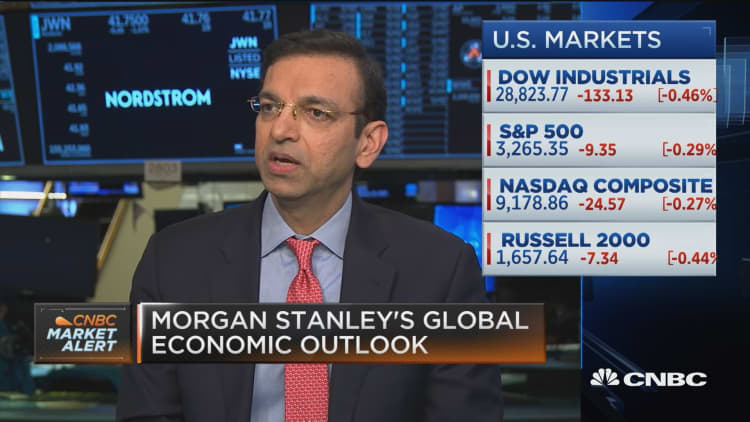
There will be more jobs reports ahead in 2020 that look like December's numbers, but it hardly spells bad news for the U.S. economy, Morgan Stanley's chief economist told CNBC on Friday.
"The number is not so bad, if you look at the fact the economy is at these levels of unemployment and the fact the growth is supposed to be slowing down," Chetan Ahya said on "Closing Bell." "We're going to continue with these kind of numbers over the next 12 months."
The Labor Department released December payroll and wage growth numbers Friday and both missed expectations.
The unemployment rate was steady at 3.5%, while nonfarm payrolls grew by just 145,000, short of estimates of 160,000. Average hourly earnings rose by 2.9%, below the 3.1% projection.
But Ahya said there's no reason to sound the alarm, because the data is in line with Morgan Stanley's broader U.S. economic outlook for 2020, which consists of GDP growth around 1.8% to 1.9%.
That level of growth dovetails with expectations for an economy in the late stages of a recovery, the investment bank noted in its global outlook report. Indeed, the U.S.' economic expansion is the longest on record going back to 1854.
All three major stock indexes closed lower Friday following the weaker-than-expected jobs data and a week chock full of geopolitical uncertainty. Even so, the averages finished the week in positive territory and remain off to a strong start in 2020.
Ahya's view toward Friday's jobs report is shared by his counterpart at Goldman Sachs.
Jan Hatzius, the investment bank's chief economist, told CNBC earlier Friday he does not see "anything concerning" in the Labor Department's figures.
"If you look at the averages, over the last three to six months, you're still in the 150,000 to 200,000 range, and that's still well ahead of what you need in the long term to stabilize the unemployment rate," Hatzius said on "Squawk on the Street."
Hatzius, who became the investment bank's top economist in 2011, did draw attention to average hourly earnings, which he said have been "on the softer side" as of late.
But Hatzius said Goldman Sachs takes a summary of additional indicators of wage growth, such as the employment cost index, to create an "overall measure of the wage trend."
"That's continued to be in a 3.25 to 3.5% range," he said, explaining why he remained confident in the health of the economy.
Goldman Sachs has said it expects U.S. GDP growth of 2.3% next year, with a 20% chance of a recession in the next 12 months. That probability is lower than the consensus of a 33% recession risk, according to the bank.
Both Ahya and Hatzius said the American economy — and the global economy, writ large — should be boosted in 2020 by the cooled trade tensions between the U.S. and China.
But those tensions being reignited poses a risk to economies around the world, Ahya said.
Another risk to the growth, he said, is the U.S. economy picking up to the point that wage growth drives higher-than-expected inflation, prompting the Federal Reserve to raise interest rates.
"Otherwise, at this point of time, we think we have a clear runway for the next four quarters where we expect a meaningful acceleration in the global economy, led by manufacturing and trade," he said.



